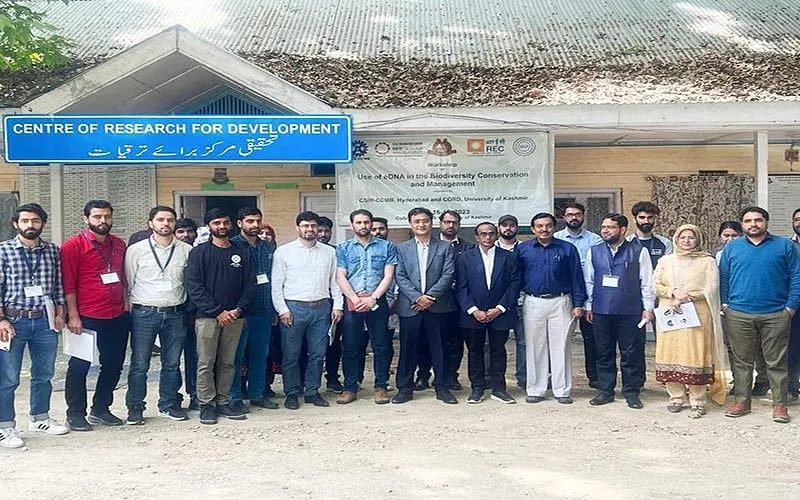Srinagar, May 17: At least 22 young researchers are being trained at the University of Kashmir in biodiversity conservation and management using eDNA.
The training is being imparted during a three-day workshop organised by Centre of Research for Development (CORD), University of Kashmir, in collaboration with Atal Incubation Center (AIC-CCMB), Laboratory for the Conservation of Endangered Species (LaCONES-CCMB), IKP Knowledge Park Hyderabad, and RECL Jammu in the newly-established Conservation Science and Innovation Laboratory (CoSI Lab) at the CORD.
The workshop will cover the theoretical and practical aspects of eDNA isolation, single-species detection using qPCR and multi-species detection using next-generation sequencing from different types of environmental samples such as soil, water, and air, the organisers said.
Rashid Y Naqash, Regional Wildlife Warden Kashmir division, Department of Wildlife Protection, J&K, graced the inaugural function as chief guest.
Dr G Umapathy, Senior Principal Scientist, LaCONES, CCMB gave the introduction about the aim and scope of the workshop, while Prof Md. Niamat Ali, Director CORD and convenor of the workshop, welcomed the participants and the resource persons.
The workshop is being conducted by three expert members from LaCONES, CCMB including Dr G Umapathy, S. Manu, and Gopi Krishnan.
A total of 22 shortlisted candidates including senior PhD students, research scholars, post-doctoral fellows, young scientists and assistant professors from University of Kashmir, Sher-e-Kashmir University of Agricultural Sciences and Technology, Islamia College of Science and Commerce, Wildlife Veterinarians from Wildlife Department, Jammu and Kashmir are participating in the workshop.
The workshop will underline importance of biodiversity assessment and monitoring using eDNA, various tools and methods used in eDNA analysis, eDNA sampling methods, preservation procedures, sequencing and computational analysis.
Citing an example, the organisers said this technology will help to easily map the distribution and diversity of various species, including endangered and rare species in aquatic and terrestrial ecosystems of Jammu and Kashmir using water, sediment and soil samples without the need for direct observation or capture of animals.







